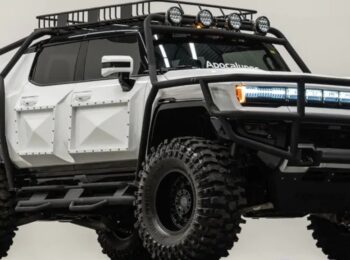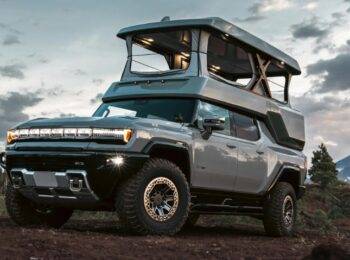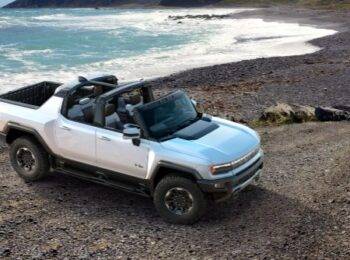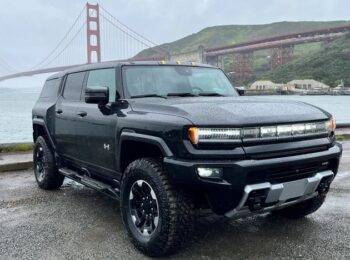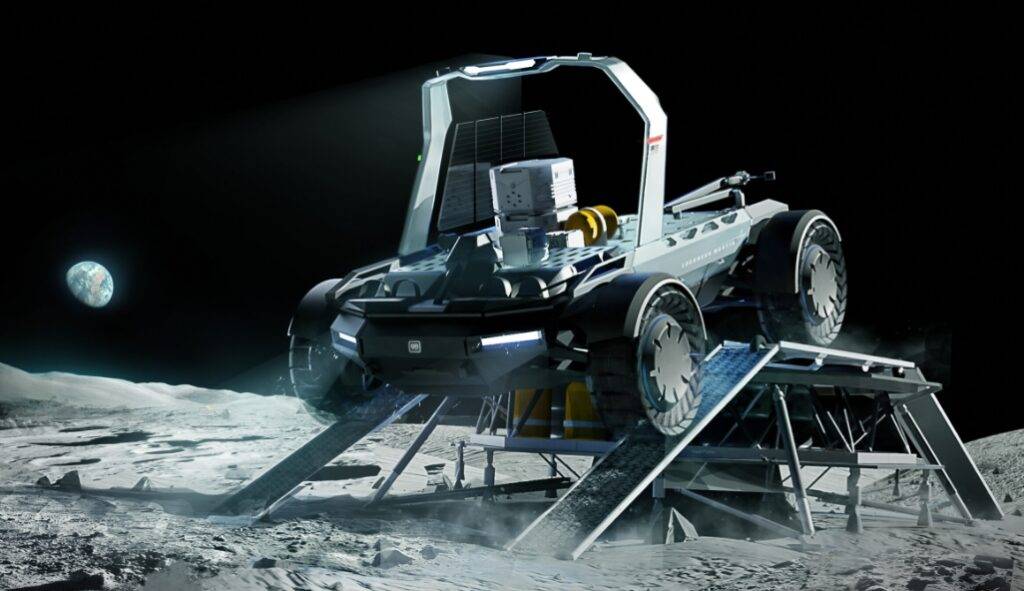
GM, the producer of the Hummer EV, and Lockheed Martin, a security and defense firm, have revealed their Lunar Mobility Vehicle (LMV) in the hopes of being selected by NASA for upcoming manned lunar expeditions. The LMV is constructed on the foundation of the Hummer EV, which will serve as the basis for the rover.
NASA’s Artemis mission aims to return four astronauts to the Moon by 2027. To achieve this, the space agency requires a new rover to transport the astronauts on the lunar surface. As a result, NASA issued a request for proposals, and GM, the American manufacturer responsible for the Hummer EV, and Lockheed Martin, the American defense company responsible for the F35, have revealed details about their joint proposal.
Common Base With The Hummer Ev
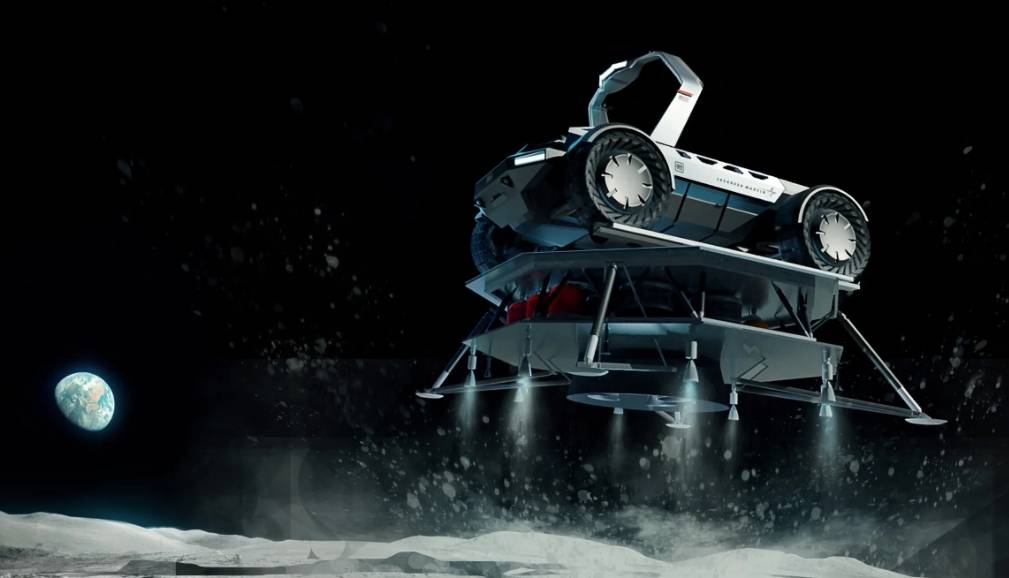
The proposed rover from the two American firms would utilize a well-established technical foundation, as it is based on the highly acclaimed 100% electric Hummer EV. This vehicle boasts exceptional off-road capabilities (including a highly practical crab mode) and operates solely on electrical energy. GM has stated in a press release that the Hummer EV’s design work will be leveraged for the rover, focusing on elements such as performance, chassis, battery, and autonomous driving.
Although the Hummer EV has a colossal energy consumption rate (which, in certain cases, can result in higher pollution levels than an electric car), it remains a fascinating demonstration of technology. However, its practicality on Earth is questionable. Engineers have taken the Hummer EV’s platform and utilized a simulator to modify it in order to maintain traction on the lunar surface, preventing it from launching into space.
Batteries Must Be Strong
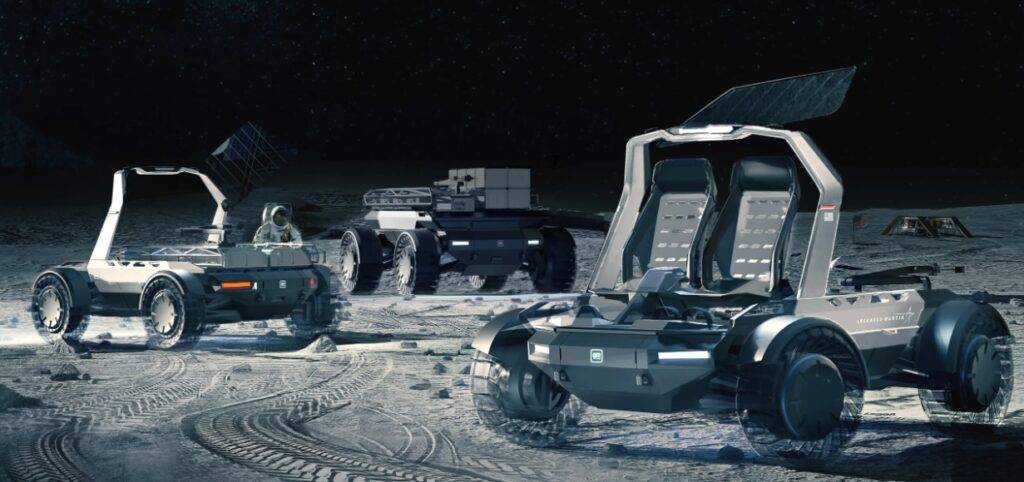
If the proposed rover is chosen, it will feature the GM Ultium electric platform, which is currently only found on the Hummer EV. To recap, this technology was introduced in 2020 and boasts an energy capacity ranging from 50 to 200 kWh, exceptional performance, and swift charging capabilities due to its 800-volt architecture.
Nevertheless, the batteries will need to be shielded from harsh weather conditions, especially the temperature fluctuations of up to 260 degrees Celsius between day and night on the Moon.
Autonomous Driving On The Program
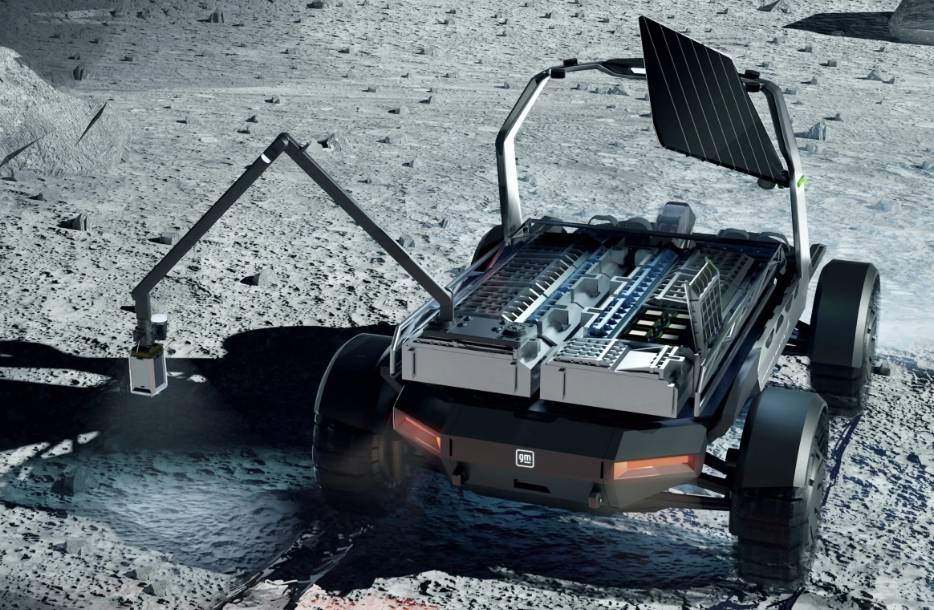
The autonomous driving aspect, which falls under the responsibility of GM’s Cruise division, is equally crucial. Its implementation will be significantly more challenging than on Earth, as engineers will not have the opportunity to conduct thousands of kilometers of real-world testing. Additionally, the surface of the Moon is much rougher than a paved road. Ultimately, the rover will facilitate the exploration of the Moon by two astronauts.
During a recent interview with Automotive News, Brent Deep, program manager at GM, revealed that the team also drew inspiration from the 1971 rover, which was created jointly by GM and Boeing and successfully completed its mission. The new rover is designed to operate on the lunar surface for up to 10 years. Regarding autonomous driving, Deep noted that the absence of a traditional road on the Moon could simplify the task, but the team would face challenges in recreating the lunar surface on a virtual map.
GM and Lockheed Martin are not the only ones participating in the call for projects by NASA for the lunar rover. Nissan has also partnered with Sierra Space, an American company. The decision by NASA is yet to be announced.

